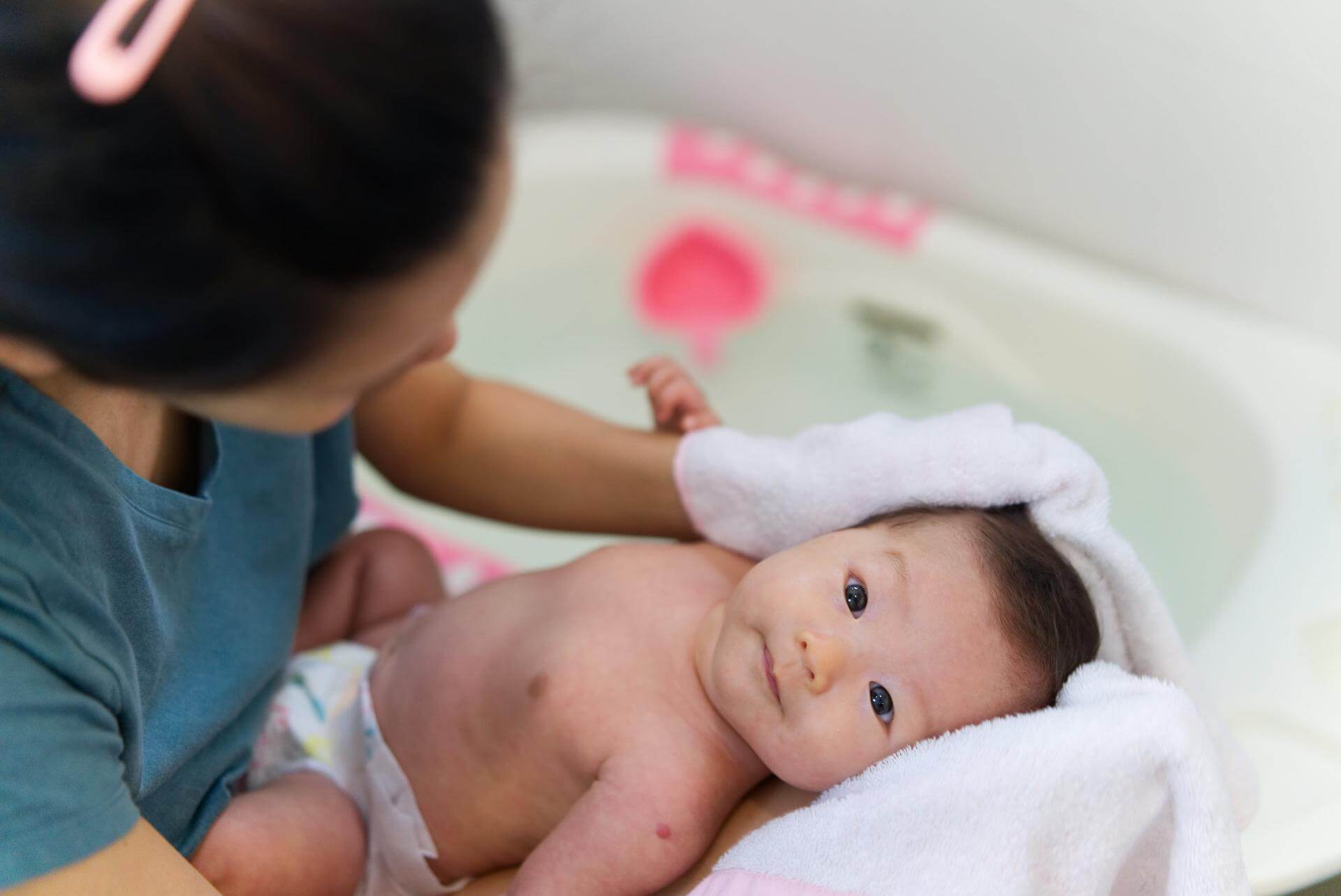The Complete Guide to a Safe and Soothing Bath for Infants from Birth
Discover how to give a safe, calming bath for infants from birth. Learn when to bathe, water temperature, skincare tips, and how to preserve bonding moments.
THE NEWBORN’S BATH
There is no medical reason why your baby should not have a bath for infants in the first hour or for a whole day after being born. On the contrary, this has many benefits. You can decide when your baby’s “first bath” will be, and you can participate in giving your baby their very first bath for infants.
There is a wax on the skin of the newborn that has the appearance of cream cheese, called vernix. It is usually found in skin folds, armpits, perineum, and in the area from the bottom towards the back of babies who are born at term. This is found even more on the skin of premature babies. New research points to the fact that vernix has immune-boosting properties, strengthening the newborn’s skin barrier and providing protection after birth. This is especially beneficial for babies born in hospital settings, where they may be exposed to hospital-acquired infections. In addition, thanks to its moisturising effect, vernix helps keep the baby’s skin soft even before the first bath for infants.
Following the birth, your newborn baby will naturally want to be held close to your chest, where she can hear your voice, smell the scent of milk, and feel the contact of your body. This is an essential source of comfort. Being close to you also stimulates breastfeeding and helps ease your baby’s transition into the world. However, separating the baby from you too soon, such as to give her a bath for infants, may disrupt her sense of security and interfere with the initial bonding period. It may also delay the first nourishment, which is vitally important and can hinder the formation of beneficial skin flora and skin pH—especially in babies born in a sterile, microbe-free environment. For these reasons, it is advised that your baby’s first bath for infants should take place within the first 48 hours after birth. It should be done in a way that prevents the umbilical cord from getting wet, such as by placing her face down on your arm and gently pouring water on the head and back.
The most delightful bath for infants is one given in a bathtub. Being in the water recreates a familiar sensation for a baby who has lived for months inside the amniotic fluid of her mother’s womb. This gives her a sense of safety and comfort. Filling the tub halfway with water, holding the baby securely by her head, and allowing the water’s buoyancy to let her move freely is a wonderful way to relax her. This is especially recommended as an evening ritual with the father to support bonding and establish sleep routines. You can check the water temperature with a thermometer, or manually with your hand to prevent any unexpected discomfort. The water should be between 37.5°C and 37.7°C—just above body temperature—for an ideal bath for infants.
Shampoo should only be used once or twice a week during these baths. Since the subcutaneous fat of newborns is not yet fully developed, and as they are transitioning from a fluid-filled environment to a dry one, their skin may peel and become dry. Additionally, since their sweat glands are inactive, they do not sweat and naturally emit a pleasant scent. Excessive use of shampoo can cause skin to become overly dry. A bath for infants using only warm water is sufficient for everyday care. In fact, adding a few drops of baby oil to the water can help reduce the hardness of water caused by limescale.
Once the bath for infants is over, gently and thoroughly dry your baby’s skin, especially all the folds, using an absorbent muslin cloth placed inside the towel. After drying, moisturise her skin using baby lotion or oil, depending on your baby’s skin needs, and then dress her in soft clothing. After this, brush her scalp with a baby hairbrush, and clean inside her nose using a nose aspirator to help prevent sneezing post-bath. Wrap a piece of gauze on your little finger to gently clean inside her mouth and the top of her tongue. Make sure to dry behind the ears and the folds of the outer ear to avoid fungal growth. Use a soft muslin cloth to gently wipe the eyes from the inside corner outwards to prevent any crust build-up.
Stay with us on every step of your journey with your baby and discover helpful tips over
here.

